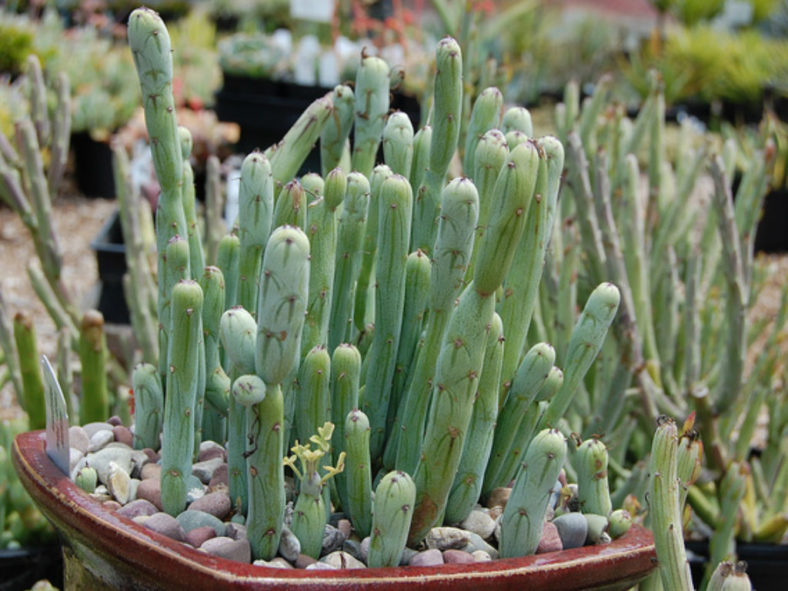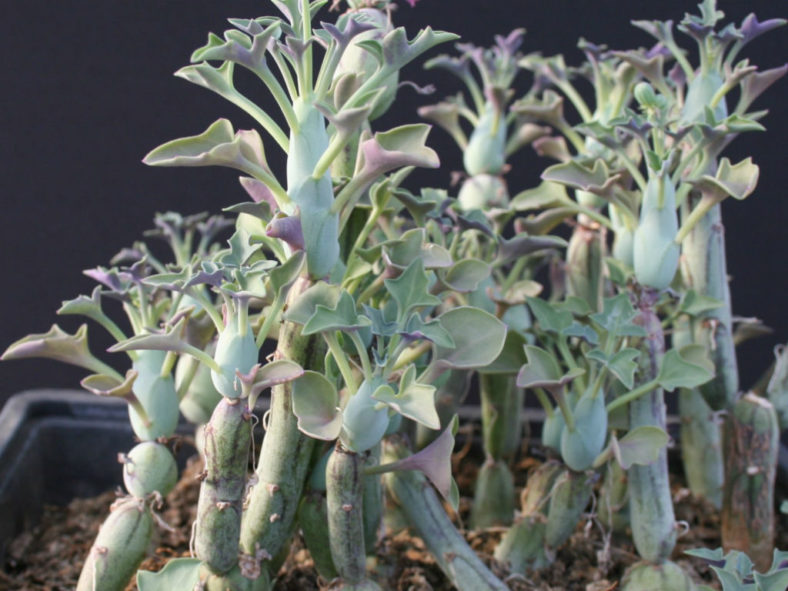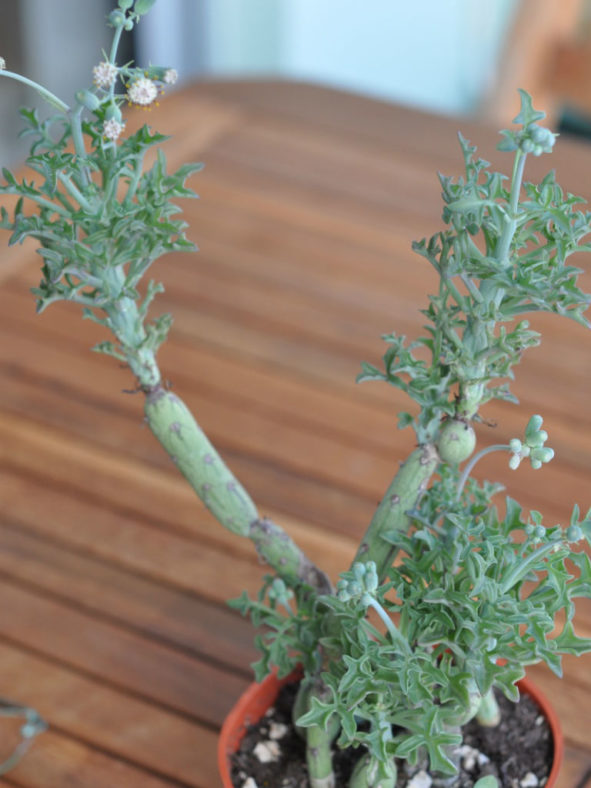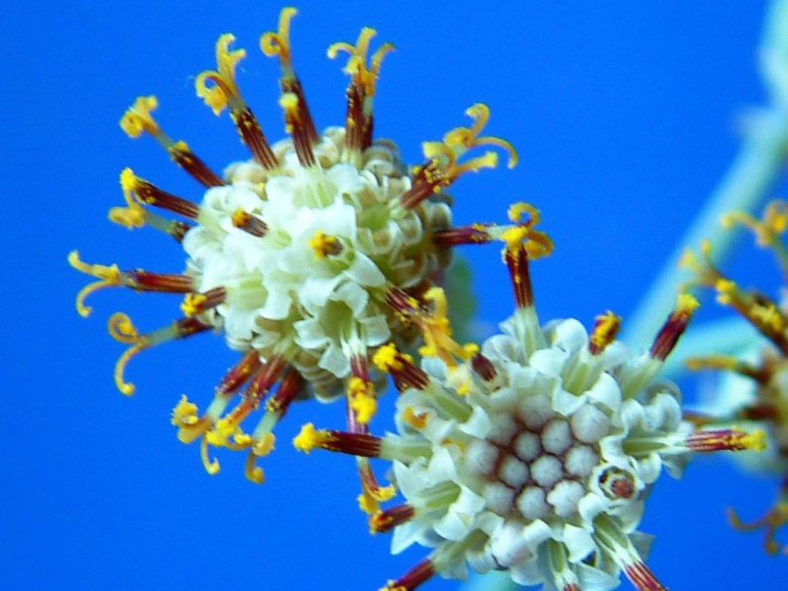Scientific Name
Baculellum articulatum (L.f.) L.V.Ozerova & A.C.Timonin
Common Name(s)
Candle Plant, Hot Dog Cactus, Pickle Plant, Sausage Daisy, Sausage Plant
Synonym(s)
Cacalia articularis, Cacalia articulata, Curio articulatus, Kleinia articulata, Senecio articulatus
Scientific Classification
Family: Asteraceae
Subfamily: Asteroideae
Tribe: Senecioneae
Subtribe: Senecioninae
Genus: Baculellum
Etymology
The specific epithet "articulatum" (pronounced ar-tik-oo-LAH-tum) means "distinct, articulated, jointed" and refers to the stem segments united by joints.
Origin
Baculellum articulatum is native to South Africa.
Description
Baculellum articulatum, formerly known as Curio articulatus or Senecio articulatus, is an intriguing succulent with segmented, sausage-shaped stems. It can reach a height of 2 feet (60 cm) and spread slowly by underground stems. The stem segments are thick and fleshy and can grow up to 4 inches (10 cm) long and 0.8 inches (2 cm) in diameter. They are grey-green with darker green or purple markings just below the petioles. The leaves are green, flushed purple when exposed to intense light, usually divided into leaflets, and can measure up to 3.2 inches (8 cm) long. The plant loses its leaves and goes dormant in summer.
The white flowers usually appear in winter in small corymbs that can reach a diameter of about 0.5 inches (1.3 cm).

How to Grow and Care for Baculellum articulatum
Light: Keep Baculellum articulatum in partial shade if outdoors, which is its preference in summer, and bright sunlight if indoors. It will grow in full shade but will become lank and leggy.
Soil: This plant prefers well-draining soil. To grow Baculellum articulatum indoors, a container with at least one drainage hole at the bottom is essential.
Hardiness: Baculellum articulatum can withstand temperatures as low as 25 to 50 °F (-3.9 to 10 °C), USDA hardiness zones 9b to 11b.
Watering: Baculellum articulatum is drought tolerant, but the soil should never be left dry for too long. It needs some water during the growing season, but be careful not to leave the soil wet for prolonged periods.
Fertilizing: This plant can take a bit more fertilizer than other succulents if you want it to grow fast.
Repotting: You do not need to repot Baculellum articulatum often. You can do it when the container becomes too small or shallow.
Propagation: This plant can be grown from seeds or cuttings.
Learn more at How to Grow and Care for Curio.
Toxicity of Baculellum articulatum
Baculellum articulatum is toxic. Grow it with great care if you have children, pets, or livestock.
Forms and Hybrids of Baculellum articulatum
Links
- Back to genus Baculellum
- Succupedia: Browse succulents by Scientific Name, Common Name, Genus, Family, USDA Hardiness Zone, Origin, or cacti by Genus
Photo Gallery
Click on a photo to see a larger version.


